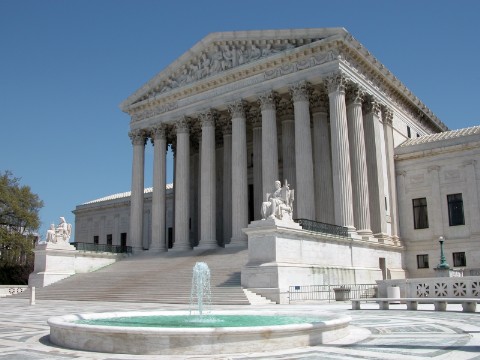The Trouble with Taxes
“To understand the nature of tax law in America, you have to understand one simple point: its complexity is a feature, not a bug. From the perspective of those closest to crafting the code, complexity offers a host of opportunities that simplicity simply can’t. Some of those opportunities are legitimate: the chance to better target taxing to achieve economic goals. But many are completely illegitimate. And for the illegitimate, when simplicity is pushed, complexity pushes back harder.” – Lawrence Lessig, Republic Lost (2011)
You don’t need a political scientist to tell you that the government services we all love cost money. And you also don’t need a political scientist to tell you that deciding who pays for those services is a highly contested debate.
On the one side are the Republicans, who since the days of Ronald Reagan have equated less government interference with fewer, simpler taxes. But as Lessig’s quote states above, this is easier said than done, because there are many willing to fight for the complex tax system.
Let me give you an example. In 2005, California hosted a little experiment, a taxing system called “ReadyReturn.” The idea behind it is that the IRS knows how much you owe them before you even send in your taxes: They have your wages from employers, and your interests and dividends from your banks. So, much like paying a credit card bill, the “ReadyReturn” system would send you a draft tax form already filled out, and all taxpayers had to do was double check and sign off on it. Of the 11,500 people who participated in the experiment, more than 97% said they would use it again next year. One report stated, “Most of the taxpayers who voluntarily participated in a test run of the state’s Ready Return program said it alleviated anxiety, saved time and was something the government ought to do routinely.” Naturally, California’s taxing authorities decided to expand upon the program in 2006. But then something happened. Intuit Inc., the company that created the tax-preparation software TurboTax, spent more than $1.7 million lobbying against the program. And they were successful…at first. The state legislature allowed it to expire, however the California Franchise Tax Board revived it in 2007. It remains in use today, covering one million Californians. (For more on this story, check out the following link: http://taxprof.typepad.com/taxprof_blog/2009/09/turbotax.html)
 Though the ReadyReturn story has a happy ending, it illustrates a major point: that there are some companies, parties, and groups willing to fight for the complexity. And despite ReadyReturn’s success, the program has not expanded beyond the state or even to the federal level, though I am sure many Americans would benefit enormously from it. Furthermore, our tax code continues to be riddled with crazy loopholes and exceptions, such as special rates that apply to, “all corporations incorporated on January 12, 1953, in Plymouth, Massachusetts with a principal place of business in Plymouth, employing at least 300 employees as of 2006.” I wonder how much money that one corporation spent lobbying congressmen.
Though the ReadyReturn story has a happy ending, it illustrates a major point: that there are some companies, parties, and groups willing to fight for the complexity. And despite ReadyReturn’s success, the program has not expanded beyond the state or even to the federal level, though I am sure many Americans would benefit enormously from it. Furthermore, our tax code continues to be riddled with crazy loopholes and exceptions, such as special rates that apply to, “all corporations incorporated on January 12, 1953, in Plymouth, Massachusetts with a principal place of business in Plymouth, employing at least 300 employees as of 2006.” I wonder how much money that one corporation spent lobbying congressmen.
On the other side, Democrats could care less about simplicity and instead argue for even more progressive taxes. And there has been some considerable research supporting the possible revenue output of raising tax rates for wealthier Americans (It’s simple economics, according to the fairly liberal New York Times: http://www.nytimes.com/2012/03/28/business/economy/the-case-for-raising-top-tax-rates.html?pagewanted=all). However, some of my Republican friends brought up several good points against this argument, namely that raising taxes too much on the rich could actually decrease revenue. The logic behind it is that wealthier Americans would respond to tax hikes by increasing their efforts to store money abroad (i.e., in Swiss banks), hire top notch tax lawyers, and take advantage of every loophole, exception, and premium possible. To me, this argument makes perfect sense, though I haven’t really been able to find any studies to back up this assertion (Think about it, who would agree to participate in that kind of study and admit to cheating the system?). I did, however, find a blog article titled “Increase Taxes, Decrease Revenue – What the Left Must Learn from Great Britain” (http://thebrennerbrief.com/2012/11/28/increase-taxes-decrease-revenue-what-the-left-must-learn-from-great-britain/). According to the article:
“Today, Great Britain’s The Telegraph published an article showing the detrimental results caused by Britain‘s passing a 50 percent tax on their rich. Since passing the tax, over two-thirds of Britain’s most wealthy have left the country, leaving only 6,000 “wealthy” people — down from an original 16,000.
As a result, country’s treasury revenues have fallen an estimated 7 billion pounds ($11.2 billion).”
$11.2 billion! For a country such as the United States, which houses the majority of the people who make regular appearances in the Forbes wealthiest people lists, losing our millionaires and billionaires might prove significantly more damaging. Again, this is largely speculative, since the government has consistently been lowering taxes for upper and middle-class Americans over the past couple of decades. So we have no modern American historical examples of the possible results of such a policy.
So what tax policies would best benefit Americans? And what policies would actually pass through Congress?
Personally, I have always been a supporter of the flat tax. To me, it seems the most logical answer. If we tax all Americans at say 11% of their income, then not only is it easier for Americans to pay their taxes, but the lack of loopholes require wealthier Americans to shell out more money, despite the appearance of a lower rate. And because everyone would be paying the same percentage (though, of course, this means that people who make more still pay more), the option would appear considerably more equal.
Of course, I understand that this option will never be passed by our Congress. The complexity of the tax system gives the government a way to appease constituents and potential campaign financiers through the prospect of tax cut treats. Furthermore, some of these exceptions serve as cheaper stipends for certain beneficial actions, such as tax cuts for people who power their homes with solar energy.
One thing we can be sure about, however, is that this debate will continue to rage so long as the government has bills to pay. Ben Franklin put it best:

Read More


 The same thought process can be applied to capital punishment. Research conducted to find correlations between the incidence of capital punishment and the likelihood of severe crimes is often contradictory (see the following link for more information:
The same thought process can be applied to capital punishment. Research conducted to find correlations between the incidence of capital punishment and the likelihood of severe crimes is often contradictory (see the following link for more information: 

 But any time you admit a competitor into a program, university, or job on the basis of extraneous background details, you are producing an unfair system. This is particularly pertinent for schools, where the primary goal is to educate. In this case, gender, race, background, etc. should not even be considered when making an admissions decision. Because if the tipping point between Applicant A and Applicant B is the mere circumstance of their birth and whether their ancestors were historically subjugated or not, then the university will not have made an incredibly unfair decision.
But any time you admit a competitor into a program, university, or job on the basis of extraneous background details, you are producing an unfair system. This is particularly pertinent for schools, where the primary goal is to educate. In this case, gender, race, background, etc. should not even be considered when making an admissions decision. Because if the tipping point between Applicant A and Applicant B is the mere circumstance of their birth and whether their ancestors were historically subjugated or not, then the university will not have made an incredibly unfair decision.
Recent Comments